
views
Cleaning the Soleplate
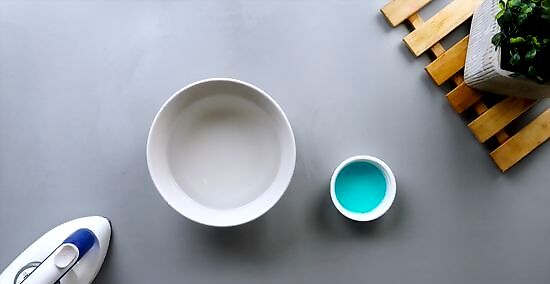
Create a cleaning mixture. Pick a mild household detergent, like a dish detergent, and mix it with water to create a cleaning solution. This solution should help cut through some of the grime and other dirt on the bottom of your iron. Depending on the type of detergent, mix 1 or 2 teaspoons (5 to 10 ml) with 1 or 2 cups (.23 to .47 l) of water. Use warm water if you can.
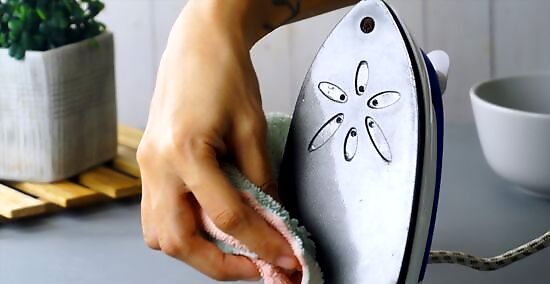
Wipe the soleplate. After you create your solution, take a clean white cloth or rag and wipe the soleplate with the solution. Make sure the iron is cool. Pay special attention to areas with extra dirt, grime, and stains. You may consider a microfiber cloth if you are worried about scratching the Teflon. However, you may need some of the abrasive power of cotton cloth to remove some stains. Just be careful not to use anything too abrasive, such as a wire brush, since this will damage the Teflon. Switch dirty cloths out for clean ones as needed.
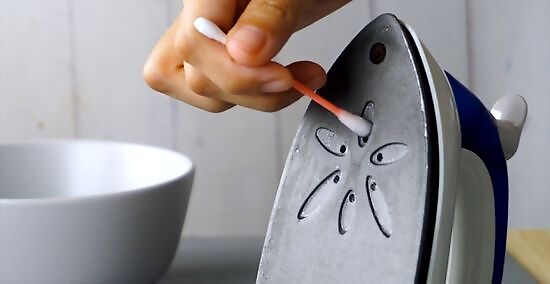
Use a Q-tip to clean the grooves or holes of the iron. Dip a Q-tip in your soap solution and rub it along the sides of groves and holes on your soleplate. You may need to go through a good number of Q-tips to get every hole and grove clean. If you come across stains or spots that are hard to clean, you can use a toothpick to (very lightly) loosen the grime.
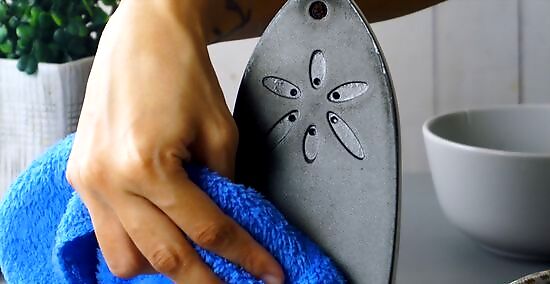
Wipe down the soleplate. Take another clean cloth, wet it, and use it to wipe down the soleplate. You may need to do this two times to remove all soap residue. In addition, take wet Q-tips and use them to remove any residue from the holes or groves of the soleplate. If you can, carefully rinse the soleplate under your sink's faucet.
Removing Tough Stains from the Soleplate
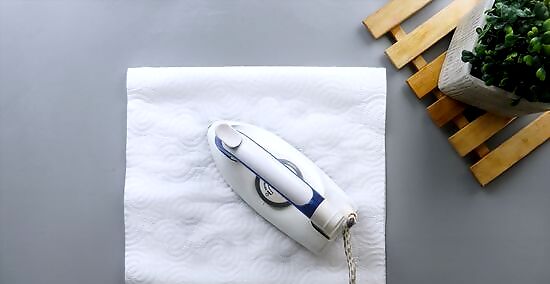
Soak a paper towel with vinegar and lay your iron on it. If you’re unable to remove stains with soap, you can soak paper towels with vinegar and then place your iron on them. By leaving your iron on the vinegar-soaked paper towel, the stains and other grime will be loosened and may come off. Make sure there is a towel another absorbent item on whatever surface you place the paper towels and iron on. Allow the iron to sit on the paper towel for 5 to 15 minutes.
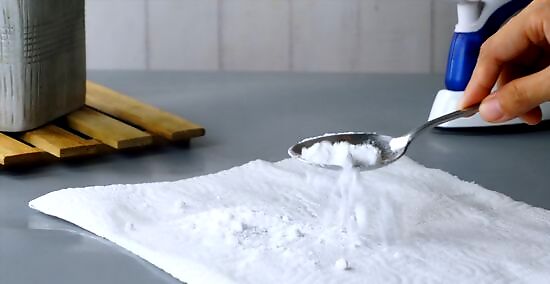
Sprinkle baking soda on the paper towel. After loosening tough stains with vinegar, you can sprinkle baking soda on the same paper towels and place the iron on them again. Make sure you use enough baking soda so that the entire surface (soleplate) of your iron will be exposed to it. If you need to re-dampen the paper towels with vinegar, feel free to do so. Allow the iron to sit for 5 to 15 minutes.
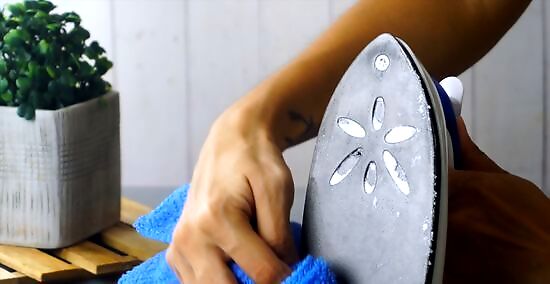
Use a clean cloth to wipe your soleplate. Lightly wet your cloth and wipe the entire surface of the iron. You may need to use 2 or 3 fresh cloths to remove all the baking soda. If you can, you may want to lightly rinse the iron in the sink. Make sure you remove all baking soda from the iron before using it again.
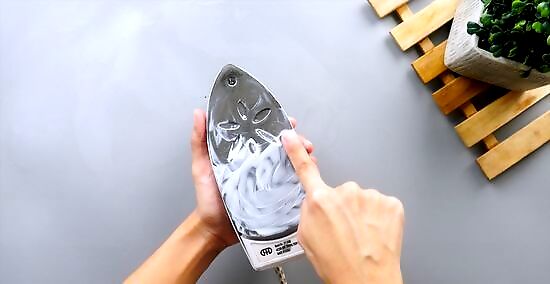
Try using toothpaste to clean the surface of the soleplate. Toothpaste is slightly abrasive like baking soda, but it will not damage the Teflon. Apply the toothpaste to the soleplate after wiping away the baking soda. Use a clean, damp cloth to work the toothpaste around the sole plate, and then wipe it away with the cloth. You will need to wipe the sole plate and rinse the cloth at least a few times to remove all of the toothpaste.
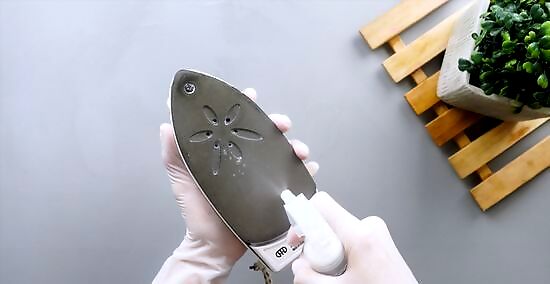
Apply oven cleaner to the soleplate if you have a burn mark on it. Oven cleaner can take off tough, burnt on stains. Put on a pair of rubber cleaning gloves before you begin and take the iron outside. Then, spray oven cleaner onto the stained area of the iron. Let the iron sit for 3 minutes, then rinse away the oven cleaner with water. Wipe the sole plate with a clean, dry towel. Make sure to do this outside or in a very well-ventilated area since oven fumes can be harmful!
Steaming the Inside of the Iron
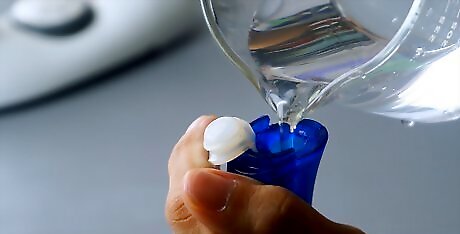
Fill the reservoir with water and vinegar. To remove hard water stains, mineral deposits, and other buildup from in the reservoir and elsewhere in the iron, you’ll need to use a water and vinegar mixture. Fill the reservoir 1/4ths of the way with vinegar. Fill the remaining 3/4ths of the reservoir with water.
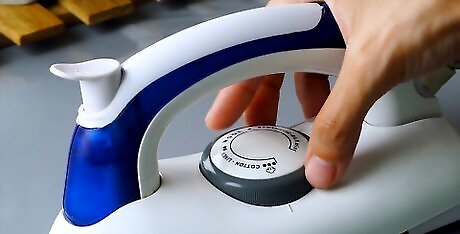
Set your iron to the highest steam setting. Place the iron in a vertical position so the steam can rise easier, and so you don’t burn any surface underneath. Allow the iron to steam until the vinegar solution is completely gone. Do this in a well-ventilated area since vinegar fumes can be irritating. If your iron has an auto-off setting, you may need to make sure it stays on.
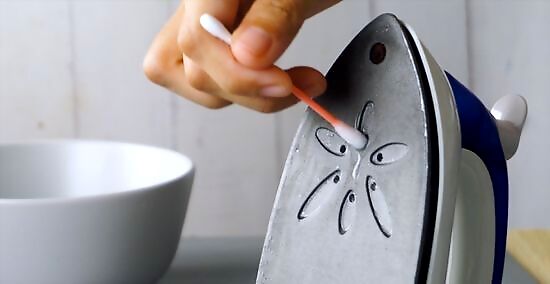
Wipe down the holes or groves in the soleplate, again. Take Q-tips or a damp cloth to wipe down the holes or grooves of the soleplate. You may also need to stick Q-tips into the holes to dig out gunk and grime. This is important, as your vinegar solution would likely have forced hard water or mineral buildup out of the holes. You may find a lot of loosened gunk. Use as many Q-tips as you need to remove it all.
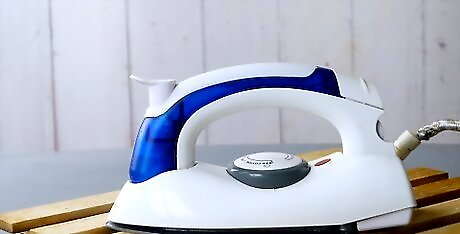
Refill the iron with water and set it to high. Before using your iron for clothes again, you’ll need to run pure water through it. This will have the effect of helping remove any residual vinegar from the reservoir and elsewhere in the iron. You may be able to set your iron to auto clean, if it has this option. Allow the iron to steam until the reservoir is almost empty. This could take up to 15 minutes.




















Comments
0 comment